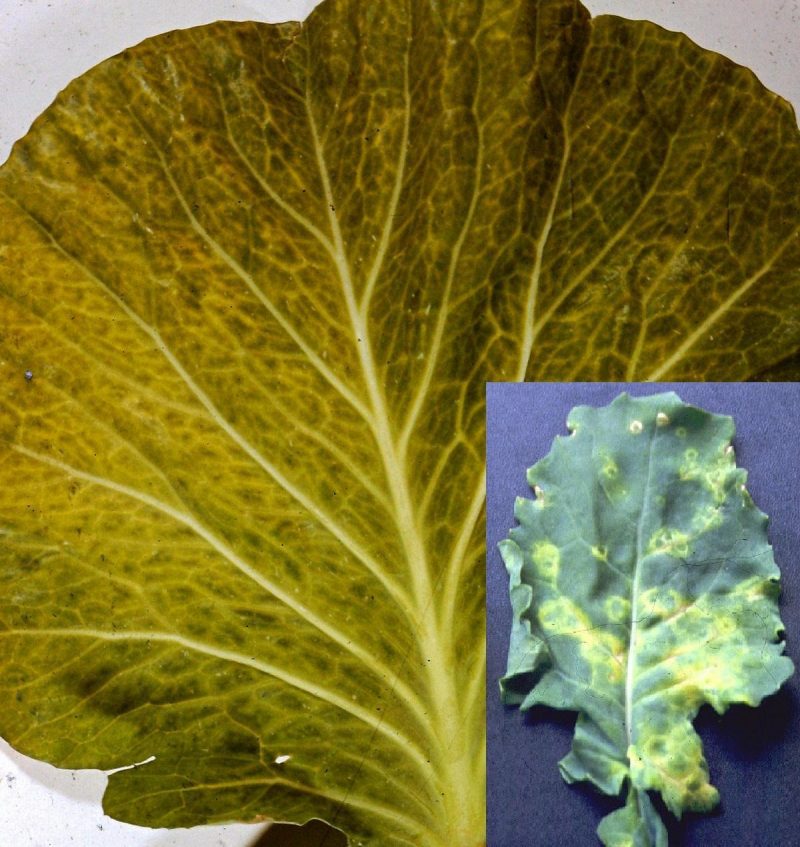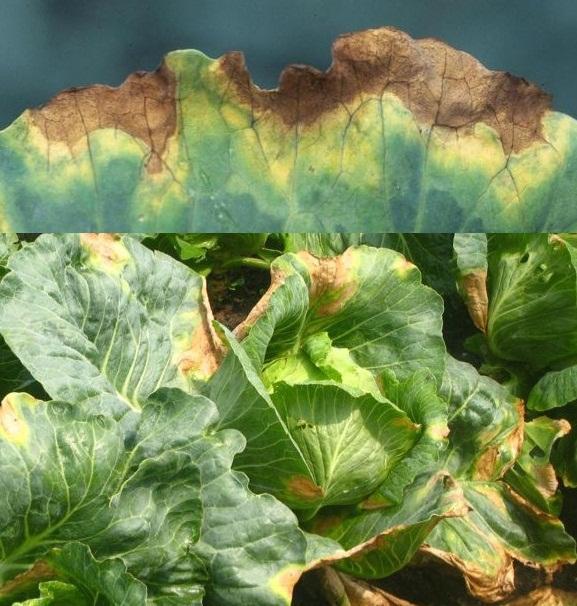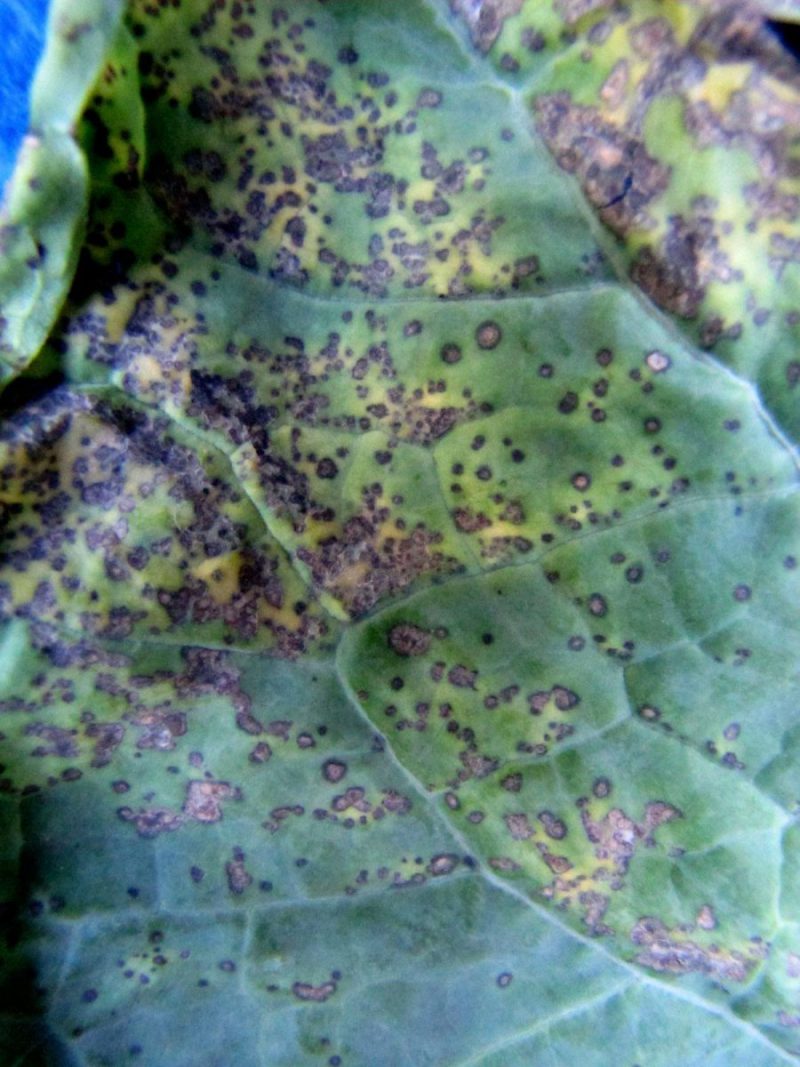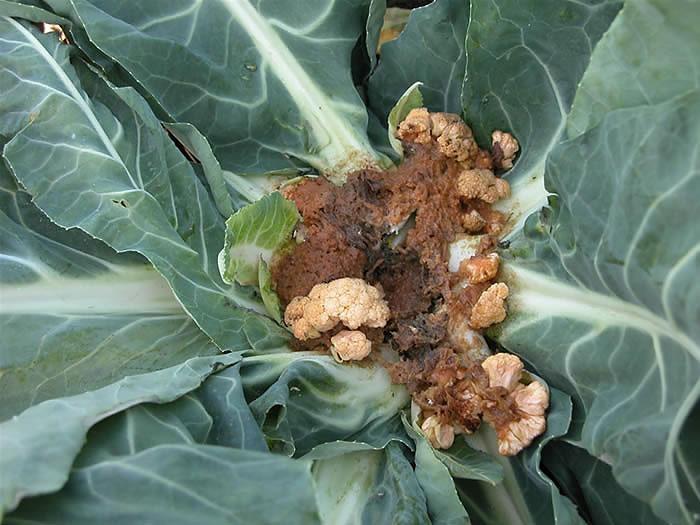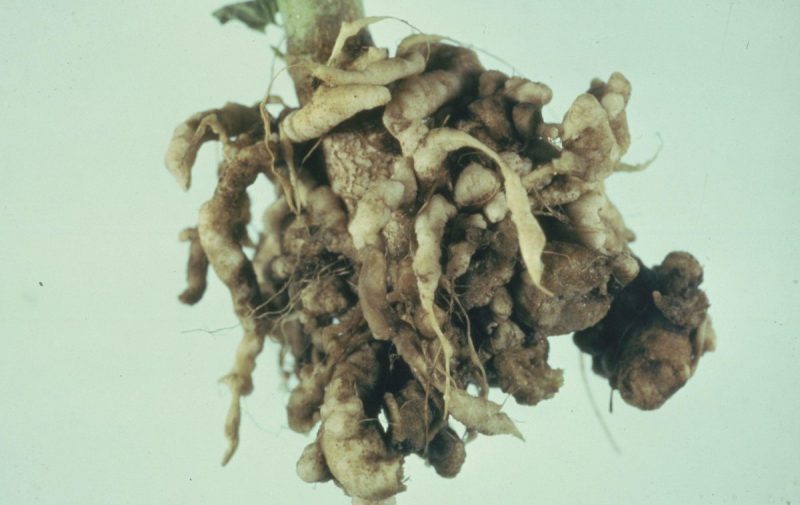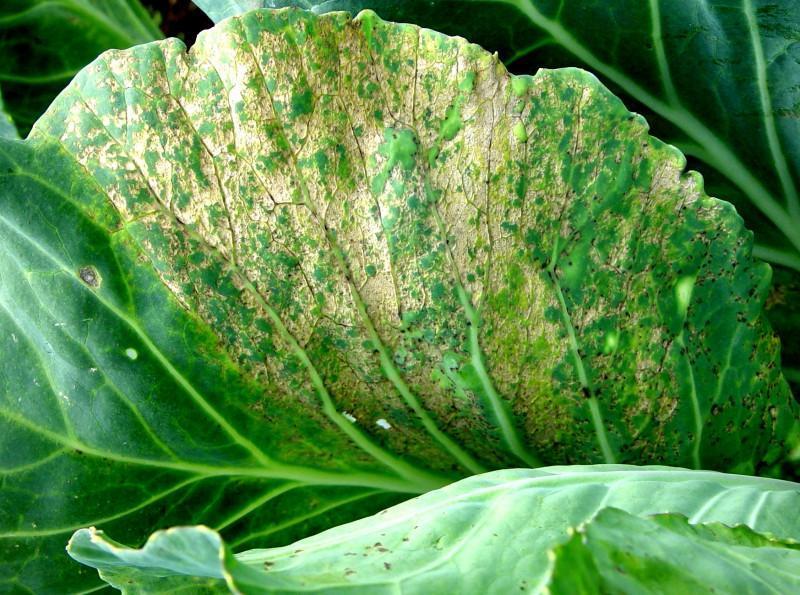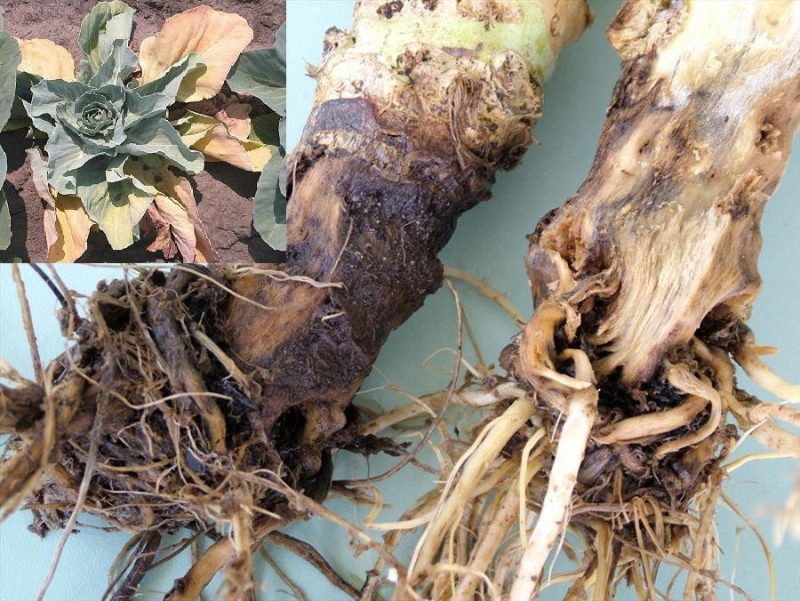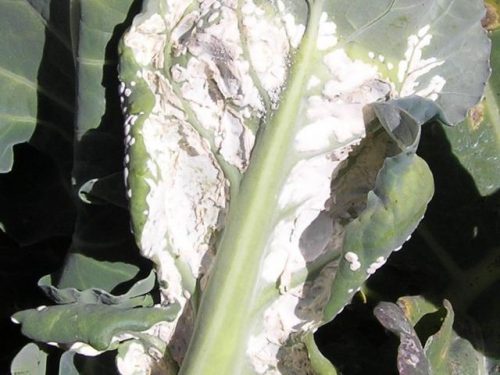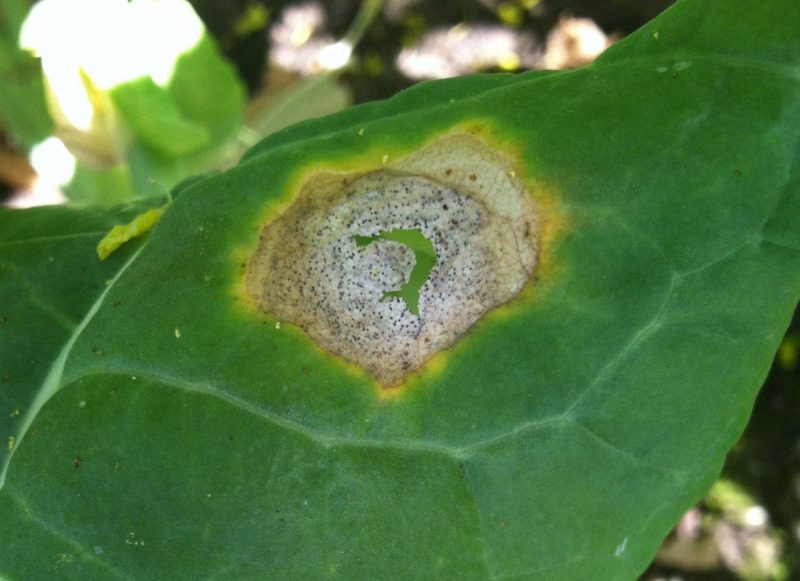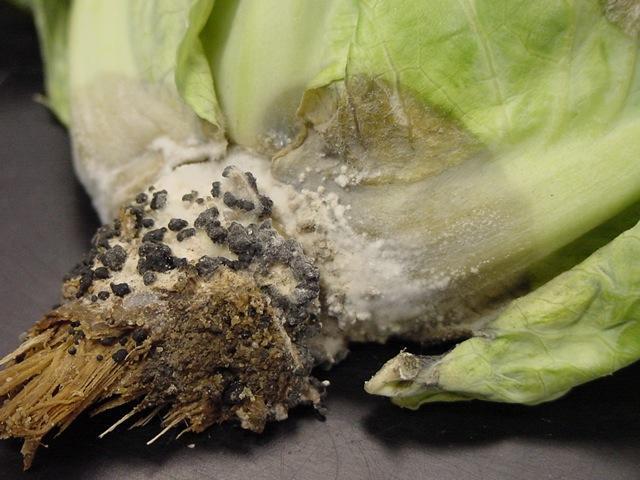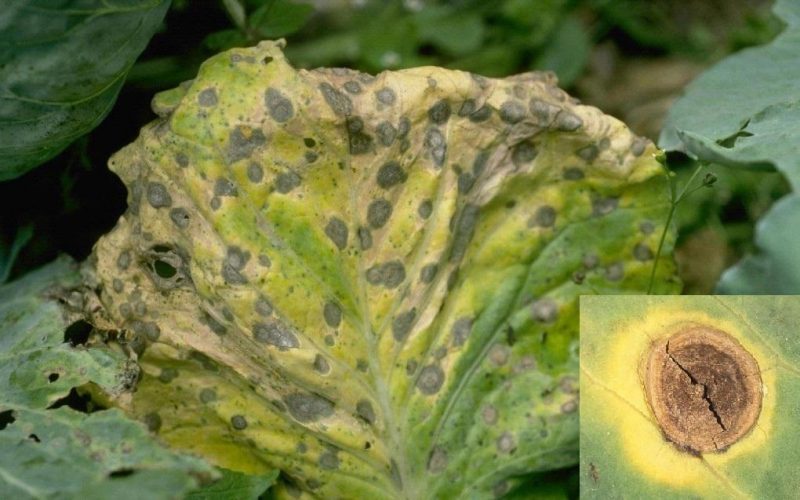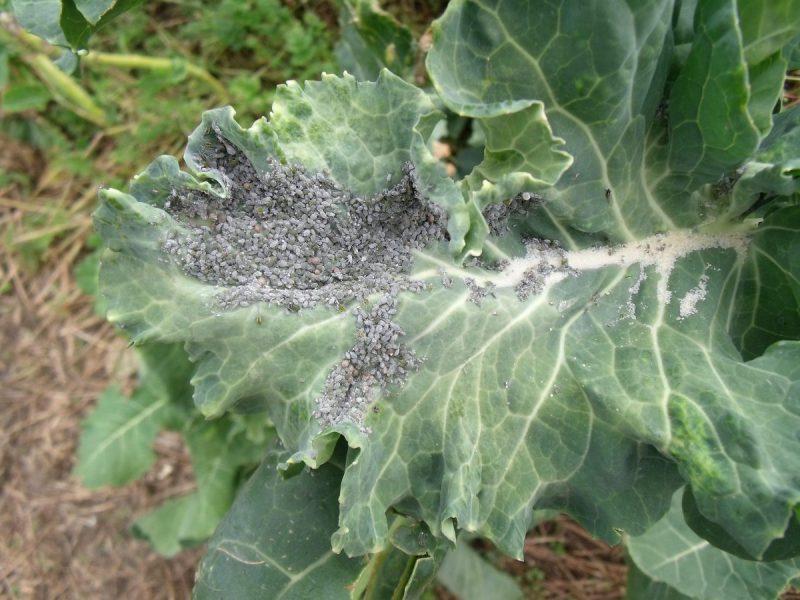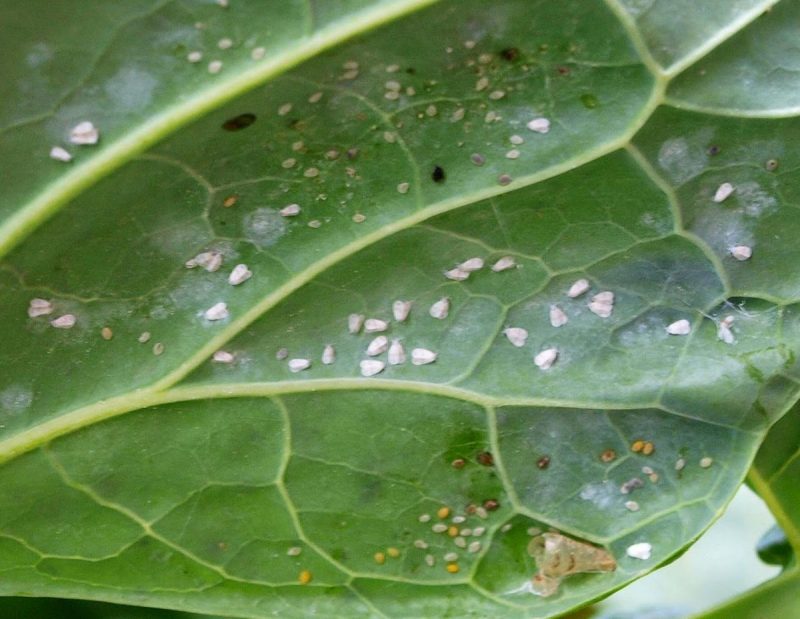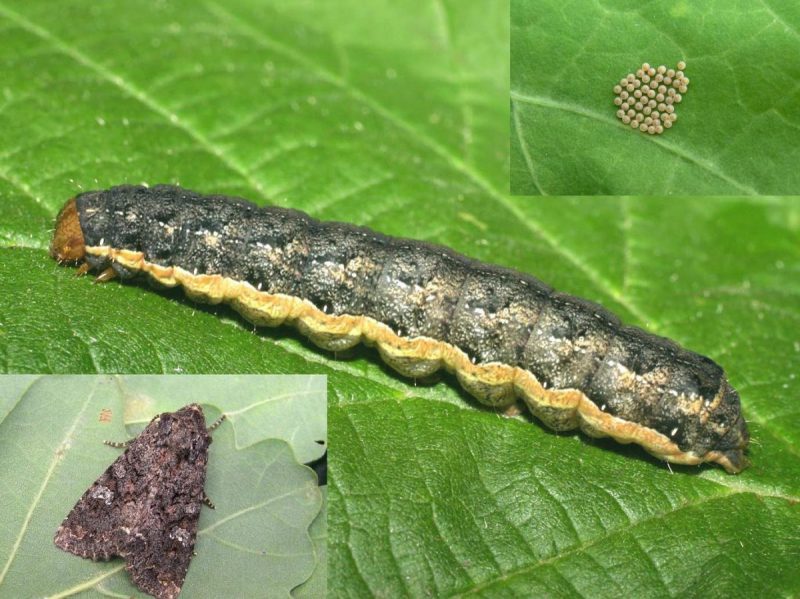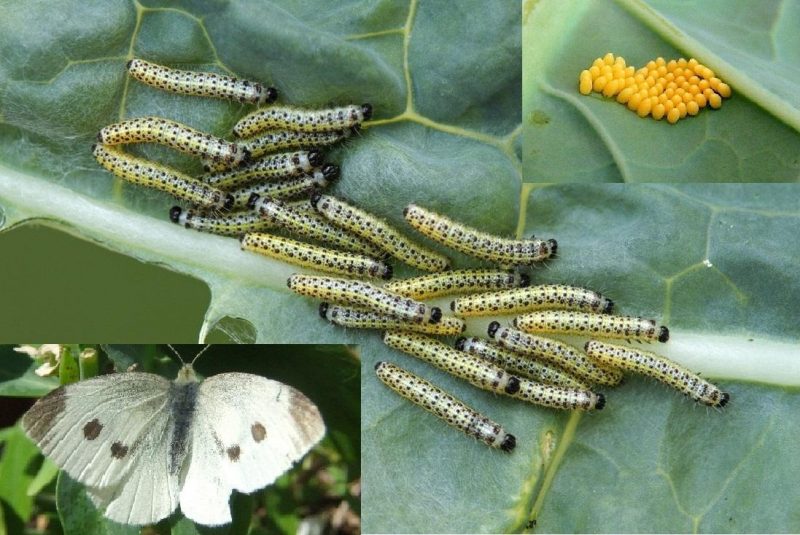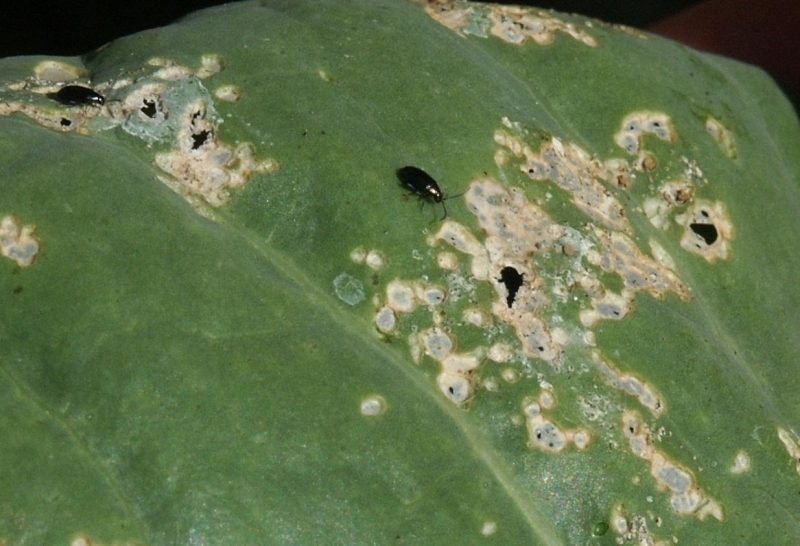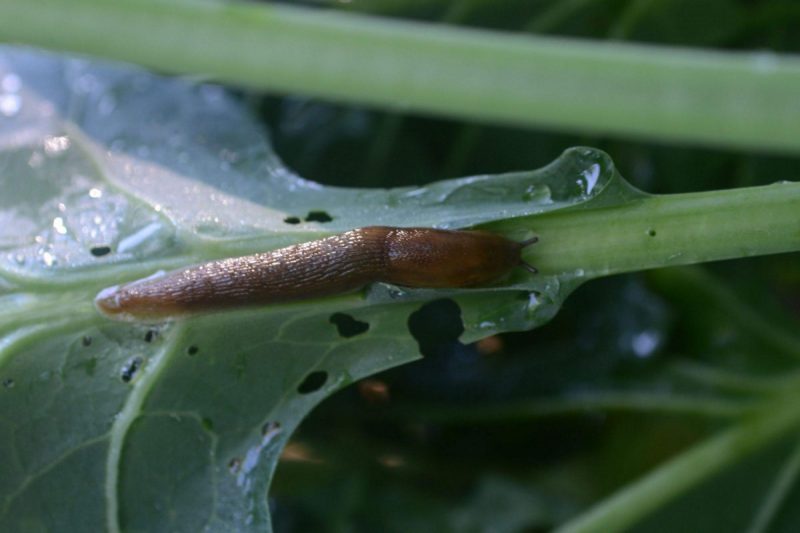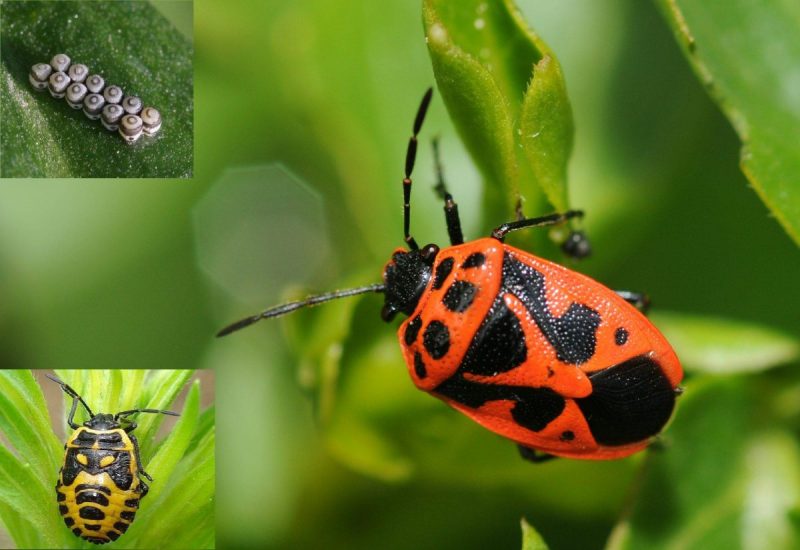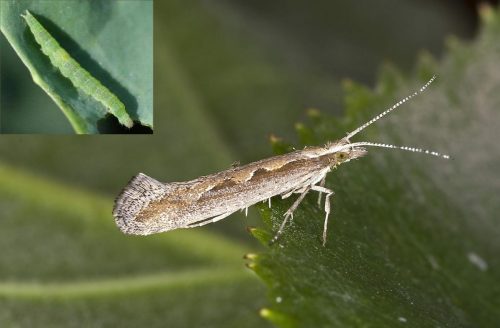Cauliflower, treatments against pests and diseases
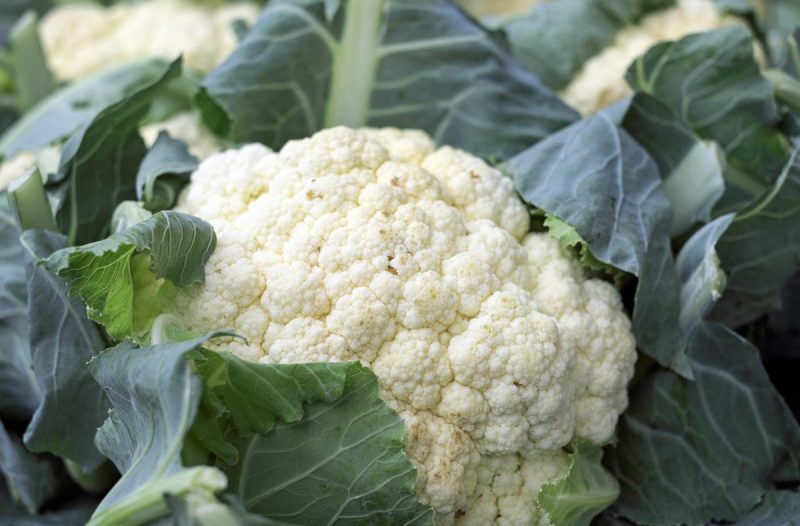
Cauliflower (Brassica oleracea var. botrytis) is cultivated for its inflorescence which can be used in various foods, in the canning and pickling industry. It is an annual plant of the cabbage family (Cruciferae), native to the Mediterranean part of Europe. The inflorescence represents the edible part. Cauliflower can be affected by pests and diseases, against which it’s important to apply the right treatments.
The main diseases of cauliflower
Viruses
Cauliflower mosaic virus
The leaves of affected plants show symptoms of discoloration of the veins and yellowing of the tissues between them. The leaves have an embossed appearance, with the edges curled towards the upper side. Affected seedlings remain small and mature plants have low yields. Chlorotic (discolored) rings may also appear on cauliflower leaves. The virus is transmitted from one year to the next through infected seeds, and in vegetation, it is transmitted by aphids.
Prevention and control measures:
- using healthy and certified seed;
- removing and destroying plants showing symptoms of the disease;
- applying insecticides to keep the insect population under control.
BACTERIOSIS
Black rot (Xanthomonas campestris)
Symptoms of black rot can vary greatly depending on the host plant, the age of the plant at the time of infestation, and environmental conditions. From the early stages of growth, small, moist spots appear on the leaves, which then turn brown. Other symptoms include yellow V-shaped lesions that often develop along the leaves’ edges. Subsequently, these lesions dry out and turn brown or tan. Attacked leaves partially or completely dry out, become parchment-like, and fall off the plant.
Prevention and control measures:
- using healthy and certified seed;
- removing and destroying plants showing symptoms of the disease;
- cauliflower treatments with specific fungicides.
Cauliflower bacterial leaf spot (Pseudomonas syringae pv. maculicola)
The disease is manifested by the appearance of small, dark, moist spots on both sides of the leaves. These spots usually remain small but can spread if conditions are favorable. For older spots, a purple edge may sometimes appear. Severe infections can cause premature leaf drop.
Prevention and control measures:
- avoiding sprinkler watering;
- using healthy seeds or seedlings;
- treatments with specific fungicides.
Bacterial Soft Rot (Erwinia carotovora)
The attack first appears on the stem, where a damp, greyish-yellow rot develops. If atmospheric humidity is high, the disease spreads over the whole plant, turning it into a foul-smelling, mucilaginous mass.
Prevention and control measures:
- growing resistant varieties;
- correct crop rotation (cauliflower can return to the same land after 3-4 years);
- gathering and destroying diseased plants;
- cauliflower treatments with specific fungicides immediately after disease emergence.
Mycosis
Clubroot (Plasmodiophora brassicae)
It is an easily recognizable disease because of its symptoms appearing on the leaves and roots. The aerial symptoms are represented by plant dwarfing, leaves yellowing, and wilting. On the roots, disease is manifested by the appearance of characteristic swellings or strangulations. Affected roots become soft, yellow and eventually rot. The disease can set in from the seedling stage.
Prevention and control measures:
- checking the seedlings before planting;
- growing tolerant hybrids;
- choosing slightly alkaline soils for planting;
- removing diseased plants from the crop;
- correct rotation (cauliflower can return to the same field after 3-4 years).
Brassica downy mildew (Peronospora brassicae)
The disease frequently occurs in plants grown at too high a density being favored by high humidity conditions. The first symptoms appear as irregular yellow spots on the leaves, which later turn brown. On the underside, opposite these spots, a greyish-white fuzz appears. Under high humidity conditions, the infection spreads rapidly, the leaves rot or dry out, and plant growth is reduced.
Prevention and control measures:
- applying cultural hygiene measures;
- removing attacked plants from the crop;
- cauliflower treatments with specific fungicides during the growing season.
Recommended products
-
You can find products on a different store
Change Store -
You can find products on a different store
Change Store -
You can find products on a different store
Change Store -
You can find products on a different store
Change Store -
You can find products on a different store
Change Store -
You can find products on a different store
Change Store -
You can find products on a different store
Change Store -
You can find products on a different store
Change Store -
You can find products on a different store
Change Store -
You can find products on a different store
Change Store -
You can find products on a different store
Change Store -
You can find products on a different store
Change Store -
You can find products on a different store
Change Store -
You can find products on a different store
Change Store -
You can find products on a different store
Change Store -
You can find products on a different store
Change Store -
You can find products on a different store
Change Store -
You can find products on a different store
Change Store -
You can find products on a different store
Change Store -
You can find products on a different store
Change Store -
You can find products on a different store
Change Store -
You can find products on a different store
Change Store -
You can find products on a different store
Change Store -
You can find products on a different store
Change Store
Fusarium wilt (Fusarium oxysporum)
Early symptoms include wilting of the lower leaves, often on one side of the plant. Attacked leaves turn brown and fall off, and with time the whole plant wilts. The attacked plants acquire a bitter taste.
Prevention and control measures:
- using healthy and certified seeds;
- removing diseased plants from the crop;
- cauliflower chemical treatments with specific fungicides.
White rust (Albugo candida)
The disease manifests itself by the appearance of yellowish spots on the leaves, where, on the underside, the white fruiting bodies of the fungus form. Severely affected leaves dry out and fall off. On the stem, the attack is characterized by a deformed growth. Also, swellings may appear on the roots.
Prevention and control measures:
- gathering and destroying plant debris after harvesting;
- using healthy seeds;
- cauliflower treatments with specific fungicides.
Cauliflower Blackleg (Phoma lingam)
The disease attacks the aerial parts of the plant. The first symptoms show up as discolored spots, on which small black dots appear, representing the fruiting bodies of the fungus. In case of a severe attack, the plant may be defoliated or destroyed. The fungus lives on plant debris and is transmitted by several vectors (water, wind, animals, tools).
Prevention and control measures:
- gathering and destroying plant debris after harvest;
- using certified seeds and healthy seedlings;
- growing resistant varieties.
White mold (Sclerotinia sclerotiorum)
The disease sets in on the stem or on leaves that come into contact with the soil. A wet mold develops on the attacked tissues, covered by a white mass, in which sclerotia develops. Attacked tissues soften and turn brown. The fungus survives as sclerotia, which can be spread by animals, humans, water, etc.
Prevention and control measures:
- gathering and destroying plant debris after harvest;
- removing affected plants from the crop;
- avoid sprinkler irrigation;
- balanced fertilization;
- seed and seedling substrate disinfection;
- chemical treatments with specific fungicides.
Recommended products
-
You can find products on a different store
Change Store -
You can find products on a different store
Change Store -
You can find products on a different store
Change Store -
You can find products on a different store
Change Store -
You can find products on a different store
Change Store -
You can find products on a different store
Change Store -
You can find products on a different store
Change Store -
You can find products on a different store
Change Store -
You can find products on a different store
Change Store -
You can find products on a different store
Change Store -
You can find products on a different store
Change Store -
You can find products on a different store
Change Store -
You can find products on a different store
Change Store -
You can find products on a different store
Change Store -
You can find products on a different store
Change Store -
You can find products on a different store
Change Store -
You can find products on a different store
Change Store -
You can find products on a different store
Change Store -
You can find products on a different store
Change Store -
You can find products on a different store
Change Store -
You can find products on a different store
Change Store -
You can find products on a different store
Change Store -
You can find products on a different store
Change Store -
You can find products on a different store
Change Store
Alternaria black spot (Alternaria brassicae)
The disease shows up as circular, brown spots on leaves and petioles. The spots evolve, enlarge, and become surrounded by a yellow border. Affected tissues dry out and fall off. The disease encourages the appearance of fungal or bacterial rots.
Prevention and control measures:
- correct crop rotation (cauliflower can return to the same field after 3-4 years);
- seed and seedling substrate disinfection.
- removing affected plants from the crop;
- avoiding sprinkler irrigation;
- chemical treatments with specific fungicides.
Recommended products
-
You can find products on a different store
Change Store -
You can find products on a different store
Change Store -
You can find products on a different store
Change Store -
You can find products on a different store
Change Store -
You can find products on a different store
Change Store -
You can find products on a different store
Change Store -
You can find products on a different store
Change Store -
You can find products on a different store
Change Store -
You can find products on a different store
Change Store -
You can find products on a different store
Change Store -
You can find products on a different store
Change Store -
You can find products on a different store
Change Store -
You can find products on a different store
Change Store -
You can find products on a different store
Change Store -
You can find products on a different store
Change Store -
You can find products on a different store
Change Store -
You can find products on a different store
Change Store -
You can find products on a different store
Change Store -
You can find products on a different store
Change Store -
You can find products on a different store
Change Store -
You can find products on a different store
Change Store -
You can find products on a different store
Change Store -
You can find products on a different store
Change Store -
You can find products on a different store
Change Store
The main pests of cauliflower
Aphids
They are polyphagous species that migrate from one plant to another or from one species to another. Aphids grow on spontaneous flora and then move to cultivated species. They occur as colonies on the underside of leaves, on flowers or inflorescences, and young shoots. Attacked plants stagnate, turn yellow, and become susceptible to fungal attack. After feeding on plants sap, the aphids cover the leaves with their sweet excrement, forming the so-called “honeydew”, which allows saprophytic fungi to settle and form sooty mold.
Control methods:
- using sticky traps;
- specific insecticide treatments;
Recommended products
-
You can find products on a different store
Change Store -
You can find products on a different store
Change Store -
You can find products on a different store
Change Store -
You can find products on a different store
Change Store -
You can find products on a different store
Change Store -
You can find products on a different store
Change Store -
You can find products on a different store
Change Store -
You can find products on a different store
Change Store -
You can find products on a different store
Change Store -
You can find products on a different store
Change Store -
You can find products on a different store
Change Store -
You can find products on a different store
Change Store -
You can find products on a different store
Change Store -
You can find products on a different store
Change Store -
You can find products on a different store
Change Store -
You can find products on a different store
Change Store -
You can find products on a different store
Change Store -
You can find products on a different store
Change Store -
You can find products on a different store
Change Store -
You can find products on a different store
Change Store -
You can find products on a different store
Change Store -
You can find products on a different store
Change Store -
You can find products on a different store
Change Store -
You can find products on a different store
Change Store
Greenhouse whitefly (Trialeurodes vaporariorum)
It is a polyphagous species that attacks many cultivated plants (in greenhouses and fields) as well as wild species. Adults and larvae colonize leaves and plant shoots. Following the attack, leaves become etiolated, dry, and fall off. This insect appears in the field only in summer.
Control methods:
- destroying plant debris after harvest;
- using sticky traps;
- specific insecticide treatments.
Recommended products
-
You can find products on a different store
Change Store -
You can find products on a different store
Change Store -
You can find products on a different store
Change Store -
You can find products on a different store
Change Store -
You can find products on a different store
Change Store -
You can find products on a different store
Change Store -
You can find products on a different store
Change Store -
You can find products on a different store
Change Store -
You can find products on a different store
Change Store -
You can find products on a different store
Change Store -
You can find products on a different store
Change Store -
You can find products on a different store
Change Store -
You can find products on a different store
Change Store -
You can find products on a different store
Change Store -
You can find products on a different store
Change Store -
You can find products on a different store
Change Store -
You can find products on a different store
Change Store -
You can find products on a different store
Change Store -
You can find products on a different store
Change Store -
You can find products on a different store
Change Store -
You can find products on a different store
Change Store -
You can find products on a different store
Change Store -
You can find products on a different store
Change Store -
You can find products on a different store
Change Store
Cabbage moth (Mamestra brassicae)
The cabbage moth is a polyphagous pest that attacks cabbage, cauliflower, kohlrabi, and other cultivated and spontaneous crucifers. The caterpillars settle on the underside of leaves and feed on their tissues. Late instar larvae gnaw holes in leaves and burrow galleries in the inflorescences, facilitating disease outbreaks.
Control methods:
- deep autumn plowing;
- specific insecticide treatments.
Recommended products
-
You can find products on a different store
Change Store -
You can find products on a different store
Change Store -
You can find products on a different store
Change Store -
You can find products on a different store
Change Store -
You can find products on a different store
Change Store -
You can find products on a different store
Change Store -
You can find products on a different store
Change Store -
You can find products on a different store
Change Store -
You can find products on a different store
Change Store -
You can find products on a different store
Change Store -
You can find products on a different store
Change Store -
You can find products on a different store
Change Store -
You can find products on a different store
Change Store -
You can find products on a different store
Change Store -
You can find products on a different store
Change Store -
You can find products on a different store
Change Store -
You can find products on a different store
Change Store -
You can find products on a different store
Change Store -
You can find products on a different store
Change Store -
You can find products on a different store
Change Store -
You can find products on a different store
Change Store -
You can find products on a different store
Change Store -
You can find products on a different store
Change Store -
You can find products on a different store
Change Store
Cabbage butterfly (Pieris brassicae)
The larvae of the white cabbage butterfly attack cauliflower, kohlrabi, radish, cabbage, and other cultivated and spontaneous crucifers. In the early ages, the larvae gnaw the lower epidermis and the parenchyma of the leaves, leaving only the veins intact.
Control methods:
- specific insecticide treatments.
Recommended products
-
You can find products on a different store
Change Store -
You can find products on a different store
Change Store -
You can find products on a different store
Change Store -
You can find products on a different store
Change Store -
You can find products on a different store
Change Store -
You can find products on a different store
Change Store -
You can find products on a different store
Change Store -
You can find products on a different store
Change Store -
You can find products on a different store
Change Store -
You can find products on a different store
Change Store -
You can find products on a different store
Change Store -
You can find products on a different store
Change Store -
You can find products on a different store
Change Store -
You can find products on a different store
Change Store -
You can find products on a different store
Change Store -
You can find products on a different store
Change Store -
You can find products on a different store
Change Store -
You can find products on a different store
Change Store -
You can find products on a different store
Change Store -
You can find products on a different store
Change Store -
You can find products on a different store
Change Store -
You can find products on a different store
Change Store -
You can find products on a different store
Change Store -
You can find products on a different store
Change Store
Crucifer flea beetles (Phyllotreta spp.)
The adults appear in early spring, and after feeding they lay their eggs in the ground, next to the cabbage, cauliflower, kale, etc. The adults attack the leaves, and gnaw the tissues, leaving the leaves with a pitted appearance.
Control methods:
- destroying wild crucifers growing close to the crop;
- collecting and destroying plant debris after harvesting;
- specific insecticide treatments.
Recommended products
-
You can find products on a different store
Change Store -
You can find products on a different store
Change Store -
You can find products on a different store
Change Store -
You can find products on a different store
Change Store -
You can find products on a different store
Change Store -
You can find products on a different store
Change Store -
You can find products on a different store
Change Store -
You can find products on a different store
Change Store -
You can find products on a different store
Change Store -
You can find products on a different store
Change Store -
You can find products on a different store
Change Store -
You can find products on a different store
Change Store -
You can find products on a different store
Change Store -
You can find products on a different store
Change Store -
You can find products on a different store
Change Store -
You can find products on a different store
Change Store -
You can find products on a different store
Change Store -
You can find products on a different store
Change Store -
You can find products on a different store
Change Store -
You can find products on a different store
Change Store -
You can find products on a different store
Change Store -
You can find products on a different store
Change Store -
You can find products on a different store
Change Store -
You can find products on a different store
Change Store
Slugs
It is a polyphagous species that attacks many vegetables, flowers, vines, etc. In vegetable crops, slugs cause significant damage, perforating the leaves and digging cavities in the inflorescences.
Control methods:
- treatments with specific products.
Recommended products
-
You can find products on a different store
Change Store -
You can find products on a different store
Change Store -
You can find products on a different store
Change Store -
You can find products on a different store
Change Store -
You can find products on a different store
Change Store -
You can find products on a different store
Change Store -
You can find products on a different store
Change Store -
You can find products on a different store
Change Store -
You can find products on a different store
Change Store -
You can find products on a different store
Change Store -
You can find products on a different store
Change Store -
You can find products on a different store
Change Store -
You can find products on a different store
Change Store -
You can find products on a different store
Change Store -
You can find products on a different store
Change Store -
You can find products on a different store
Change Store -
You can find products on a different store
Change Store -
You can find products on a different store
Change Store -
You can find products on a different store
Change Store -
You can find products on a different store
Change Store -
You can find products on a different store
Change Store -
You can find products on a different store
Change Store -
You can find products on a different store
Change Store -
You can find products on a different store
Change Store
Cabbage bug (Eurydema ornata)
It has 1-2 generations per year and overwinters as an adult, under tree leaves. Adults appear in early spring, feed on spontaneous cruciferous vegetables, and then lay their clustered eggs on the underside of cauliflower, cabbage leaves, etc. Adults and larvae sting and suck the plant sap from tissues, causing necrosis.
Control methods:
- destroying weeds;
- chemical treatments with specific insecticides.
Diamondback moth (Plutella xylostella)
It has several generations per year and overwinters in the pupa stage in a silky cocoon on attacked leaves. Adults lay their eggs on the underside of the leaves. The larvae gnaw the epidermis and parenchyma, giving the leaves a leaden appearance.
Control methods:
- destroying weeds;
- gathering plant debris after harvest;
- chemical treatments with specific insecticides.
Recommended products
-
You can find products on a different store
Change Store -
You can find products on a different store
Change Store -
You can find products on a different store
Change Store -
You can find products on a different store
Change Store -
You can find products on a different store
Change Store -
You can find products on a different store
Change Store -
You can find products on a different store
Change Store -
You can find products on a different store
Change Store -
You can find products on a different store
Change Store -
You can find products on a different store
Change Store -
You can find products on a different store
Change Store -
You can find products on a different store
Change Store -
You can find products on a different store
Change Store -
You can find products on a different store
Change Store -
You can find products on a different store
Change Store -
You can find products on a different store
Change Store -
You can find products on a different store
Change Store -
You can find products on a different store
Change Store -
You can find products on a different store
Change Store -
You can find products on a different store
Change Store -
You can find products on a different store
Change Store -
You can find products on a different store
Change Store -
You can find products on a different store
Change Store -
You can find products on a different store
Change Store














































































































































































































































































































































































































































